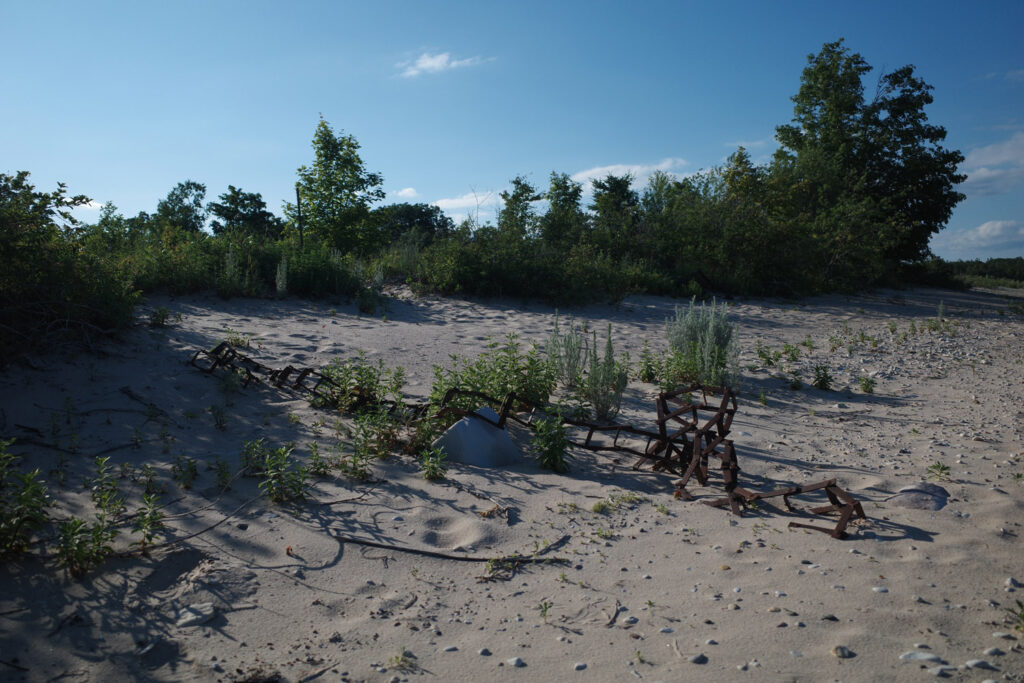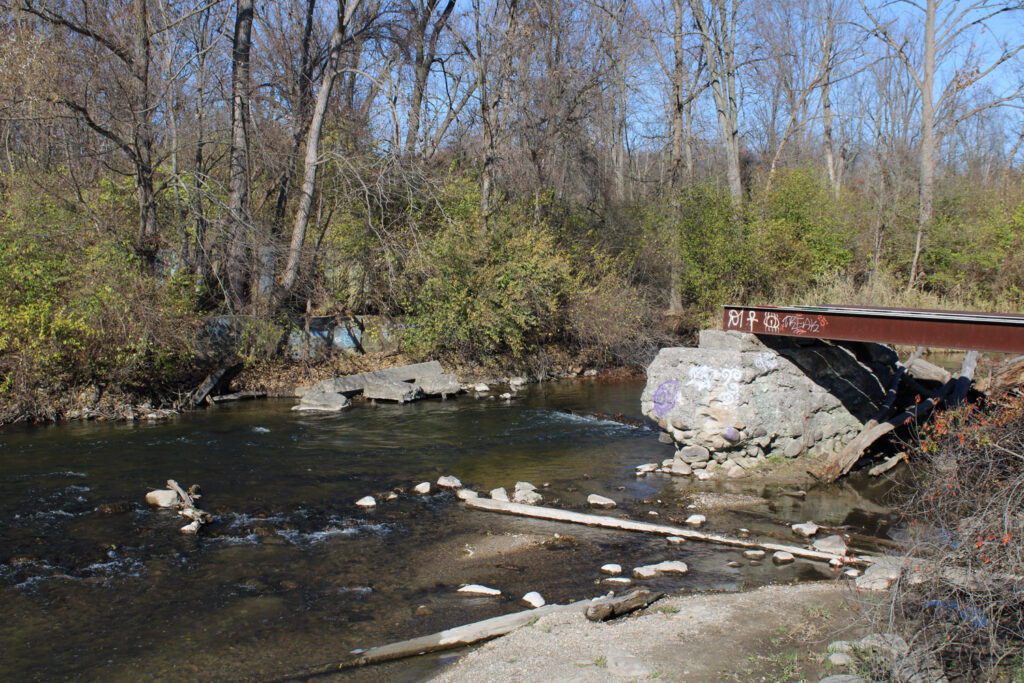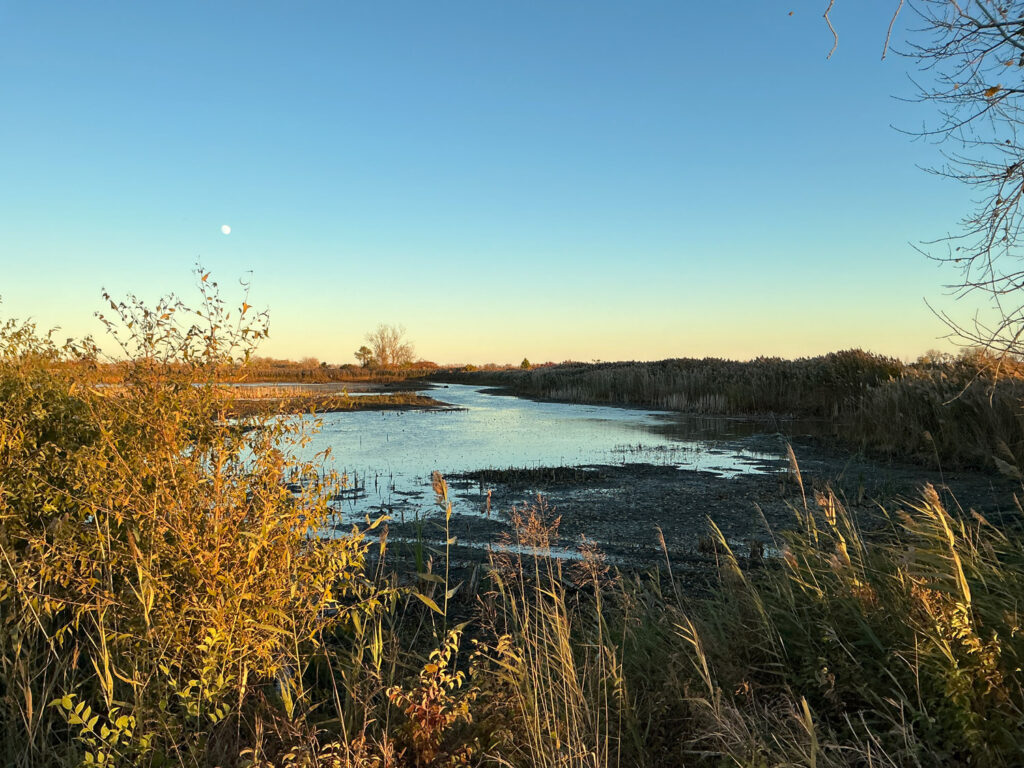High Island — I had set my sights on reaching a deserted island in the middle of Lake Michigan. Yes, that’s right. A deserted island, High Island. There is nothing there, or so I had heard. No towns, no roads, no trails, no houses, no nothing. But I had to get there. I had to know what was out there. I had to see for myself. Why? Well, don’t worry about that right now.
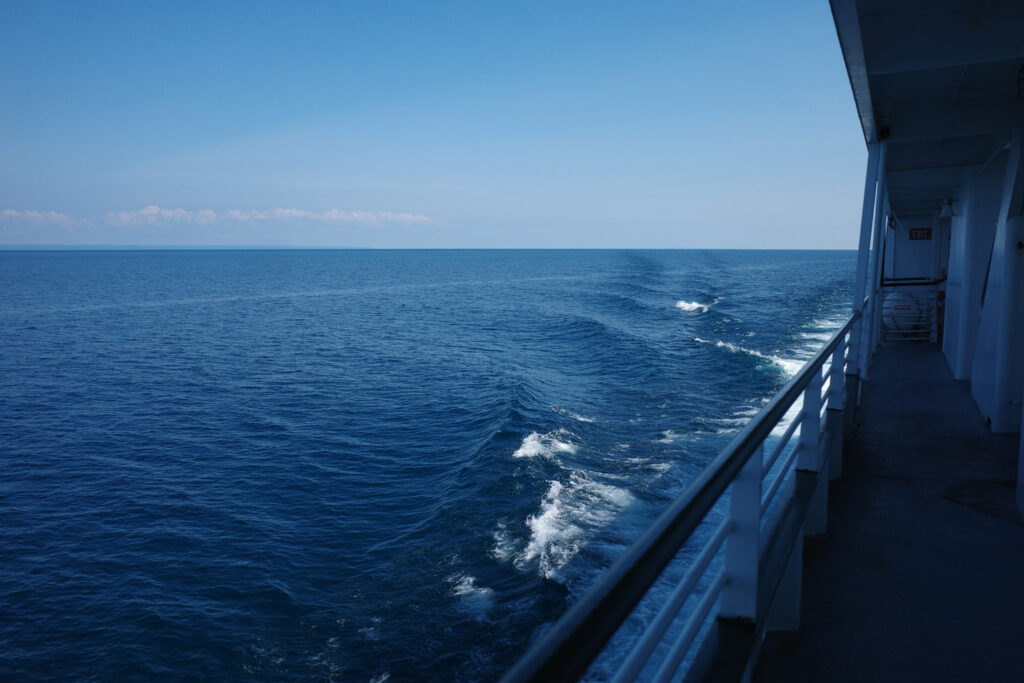
The ferry from Charlevoix to Beaver Island left at 2:30 p.m. on Wednesday, and I was on it. The lake was smooth, the sun high, the ride splendid. Sitting on the long benches up top, watching the wake fan out behind the boat as we headed west, the scene was cinematic. Just over two hours later, we passed the old stone Beaver Island Harbor Lighthouse to our right and docked at St. James on Beaver Island at 4:45 p.m.
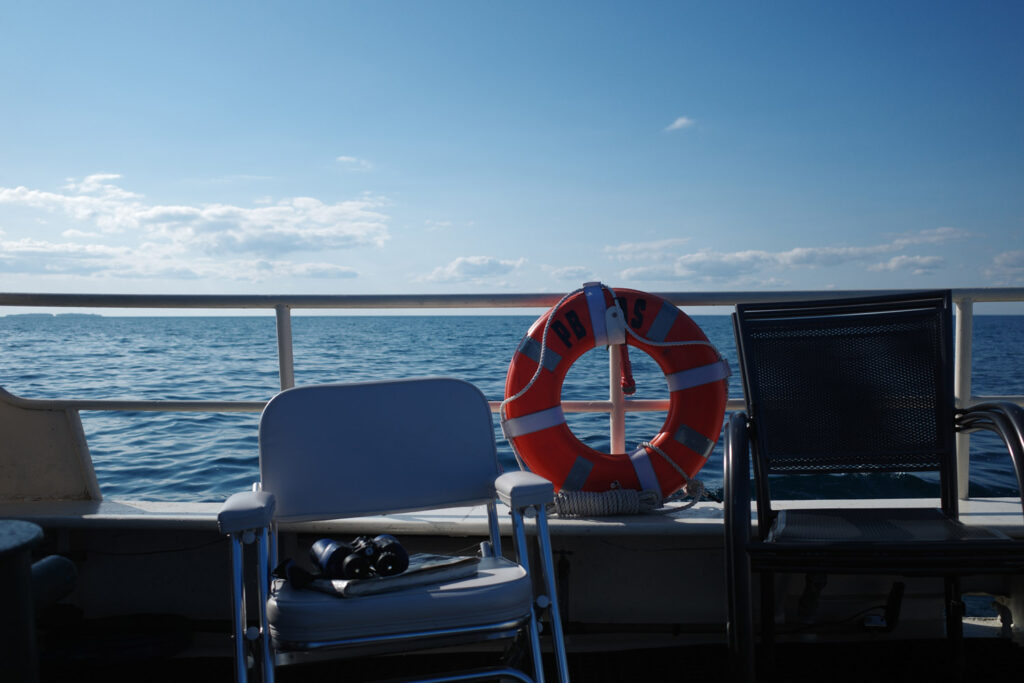
A few minutes later, I was off the ship and walking down Main Street toward the Beaver Island Lumber Company. I was told to meet Captain Weede and his charter—The Resolute—at the dock across the street. Four minutes later, I did. Ten minutes after that, we were on the great green ship and Captain Weede was briefing me on the necessary safety protocol.
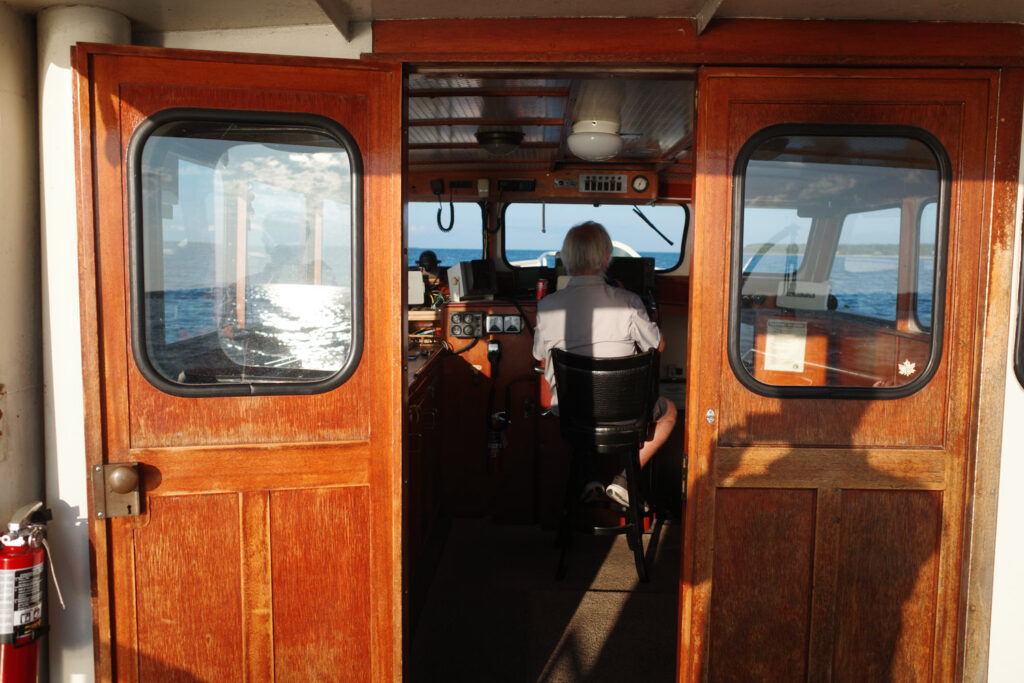
It was three of us on The Resolute. Myself, Captain Weede, and a crew consisting of one man—a tall, strong, older gentleman with a graying handlebar mustache, navy overalls, and a great sense of humor. By 5:11 p.m., we were on our way. Heading out of Paradise Bay, we passed sailboats floating in the water heading toward shore, their white sails lightly rippling in the wind, a few fishing boats rolling slowly, and finally, the boathouse on Whiskey Point with it’s bright red roof.
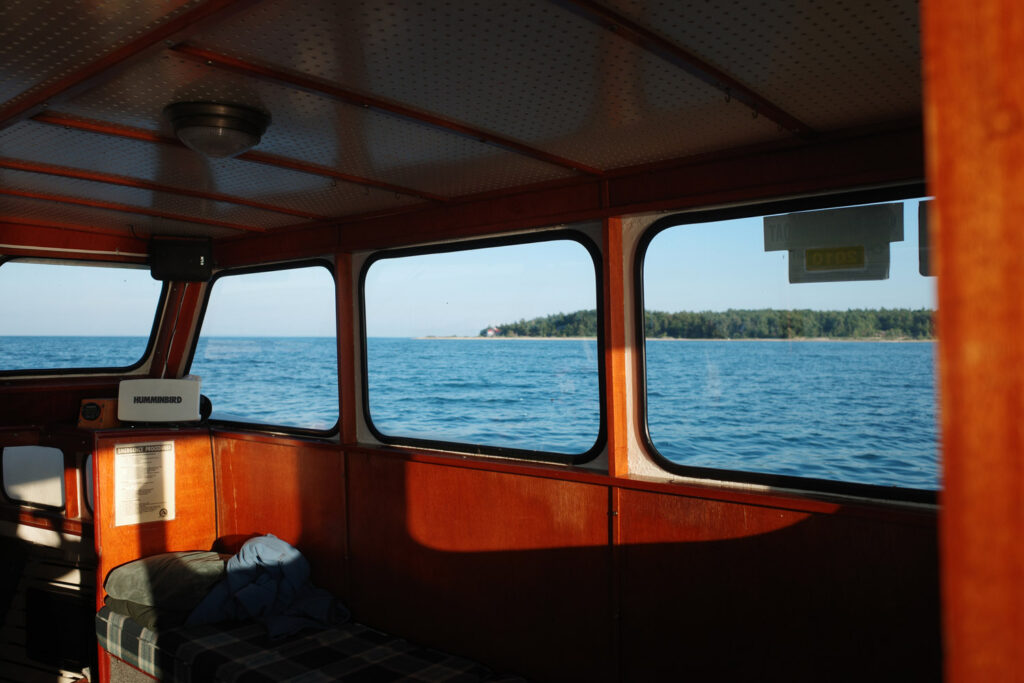
Paradise Bay is on the northeast side of Beaver Island. It’s a sheltered cove with a crook closing from the north. High Island is directly west. After making it out of the bay, we headed north and then west around the northern tip of the Island. It’s really an archipelago, all these islands. Heading west toward High Island, we passed Garden Island to our north, Ojibwa Island (formally Squaw Island), and Whisky Island too. Approaching High Island we had a view of Trout Island and the runway that cuts the island in two. The day was clear, and we could see the U.P. as we sailed to our deserted destination.
As we bobbled along the water, the only signs of civilization to be seen were the scattered houses on the shore of Beaver Island. Everything else to our west, east, and north was as it always was. The trees, the water, the shore, the sky. These other islands are too, uninhabited.
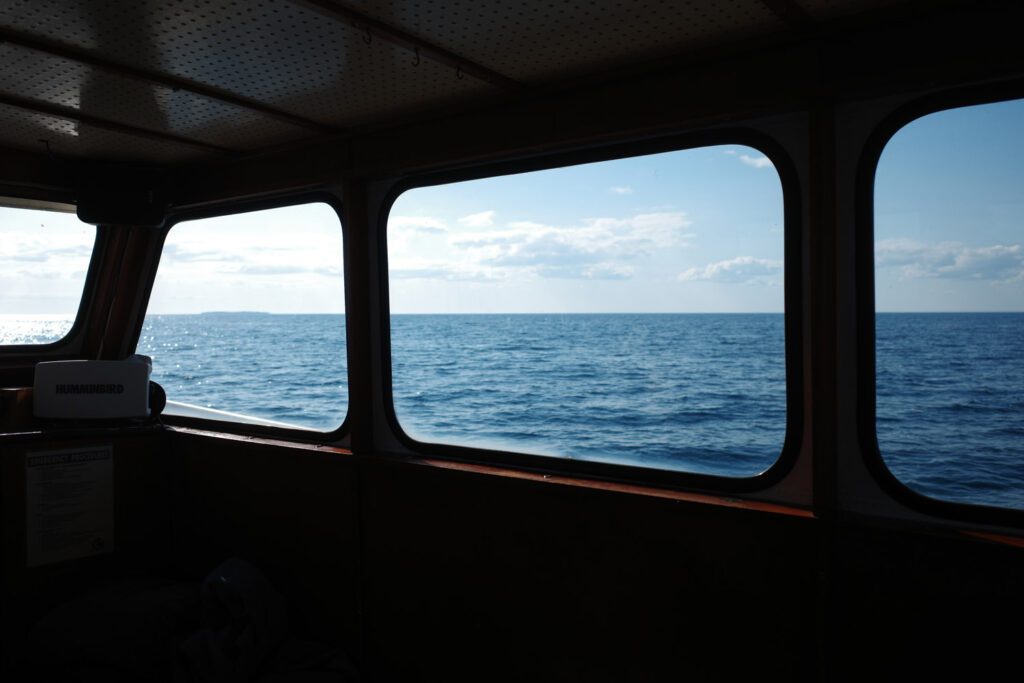
The 90-minute trip from Paradise Bay to High Island was, as they say, pure kino. Captain Weede steered our ship from a cabin that belongs on a Wes Anderson set. We moved freely about the ship, coming in and out of the golden cabin as we pleased. I sat drinking an ice-cold Coke, watching the skiff dragging along behind the ship, tossing in the wake.
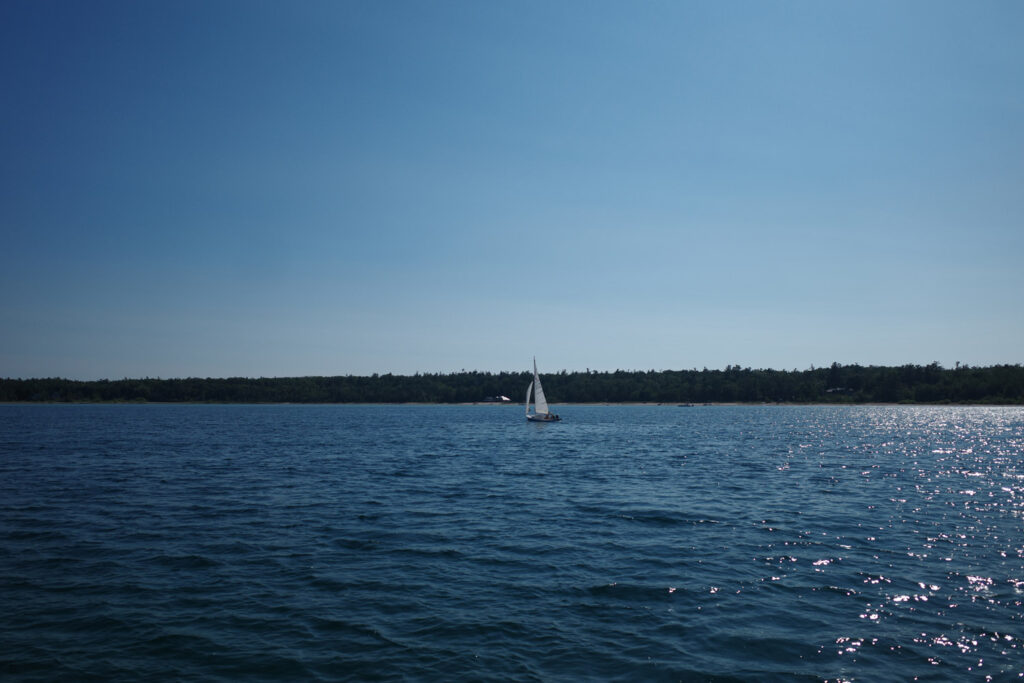
High Island appeared through the front glass of the cabin. There are rolling hills in the center that look like camel humps when approaching from the east. The island got its name from a grand, high dune on its western side. Some distant, deserted rival or cousin to the towering sand at Sleeping Bear Dunes.
By 6:45 p.m., the Resolute dropped its anchor in High Island Bay. A few minutes later, we were on the skiff and heading toward shore. At 6:50, I stepped off the boat, barefoot, onto the shore of this deserted island in the middle of Lake Michigan.
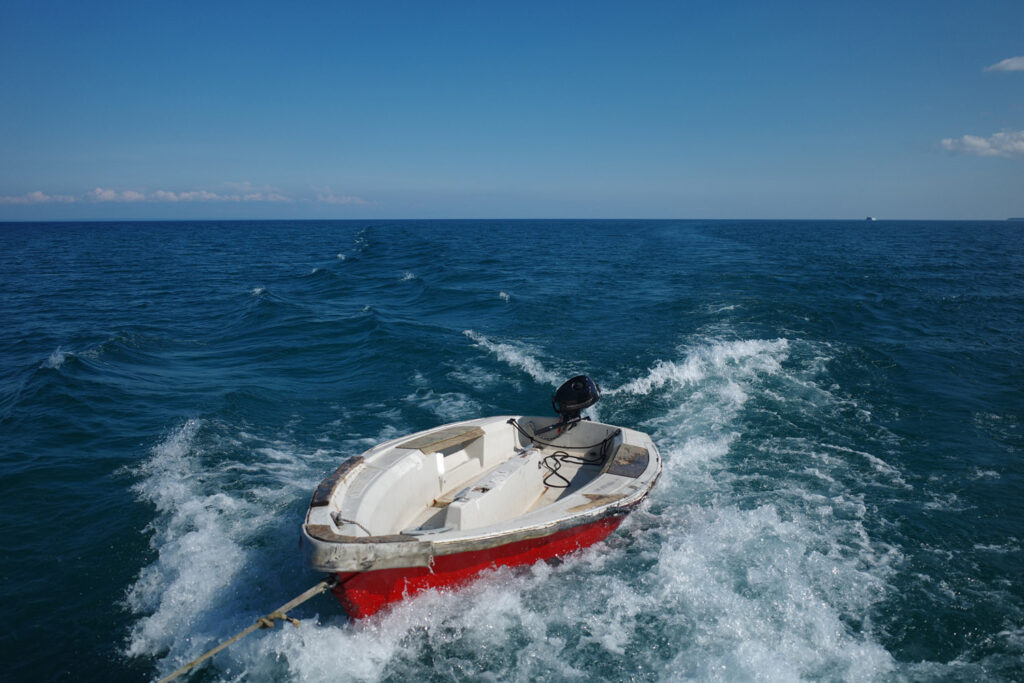
Peeking out from the brambles protecting the inner sanctuary of this wild and free island was an old, brown, rusting piece of steel. A boiler. Down the shore, in the shadows of the trees, surrounded by pebbles and soft sand, was an abandoned twisted piece of steel. Joints frozen stiff, whatever it was hadn’t been used in decades. Rusted pots, broken pieces of steel, rough scraps littered across the sand.
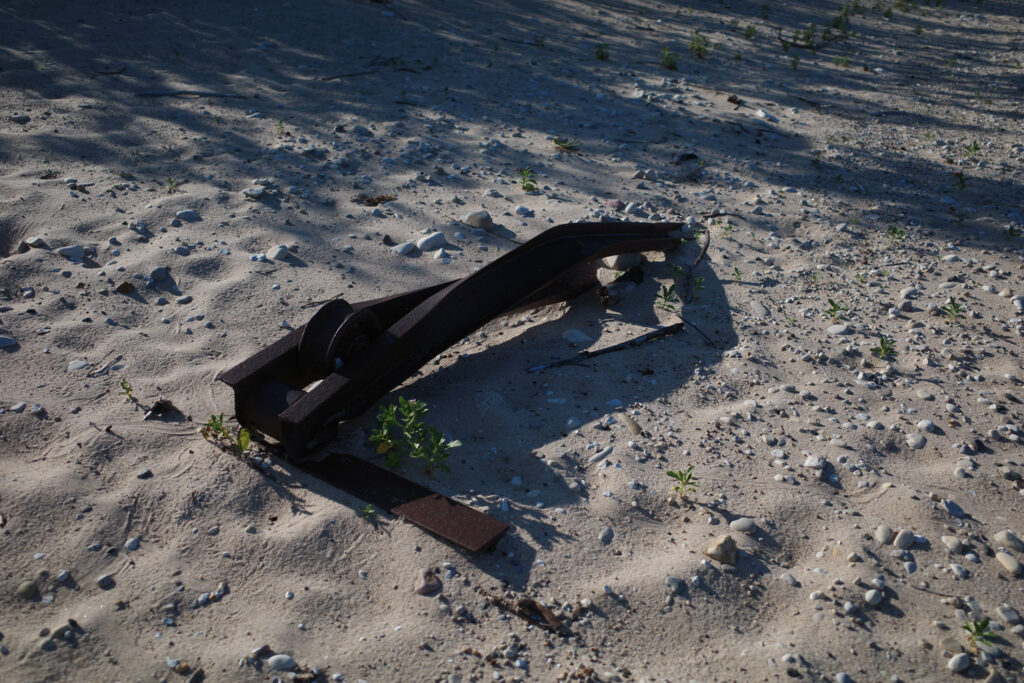
Most striking of all was a set of steel railroad tracks running west through the sand, nearly buried, trailing off into the crystal blue water. The old steel tracks running parallel straight down, deep into the water until becoming invisible. In the water there were bits of algae growing on these old relics. The soft, green plant-life swayed gently back and forth with the rhythm of the little waves.
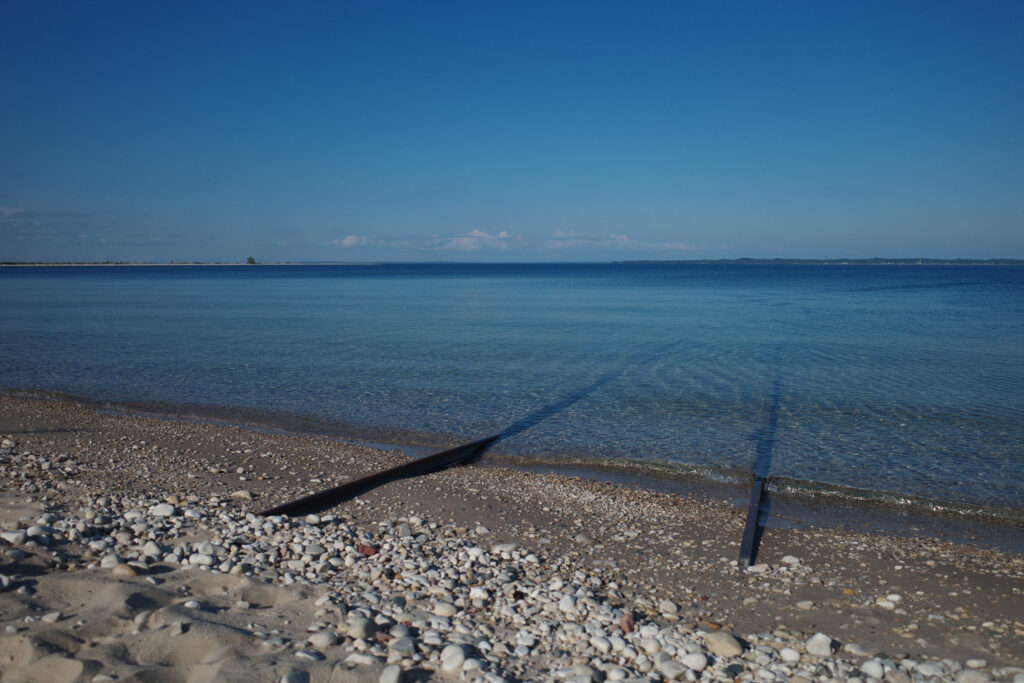
What is all this? Why is it here? Who built it? And where did they go?
This was all, once, part of the House of David. They were a religious group. Or maybe they were a sect, or a cult. The word one chooses carries some kind of connotation, and I’m not exactly sure which one to choose. Perhaps the choice lies in the eye of the beholder. Whatever they were, the House of David, or at least 150 of them, once made the island their home.
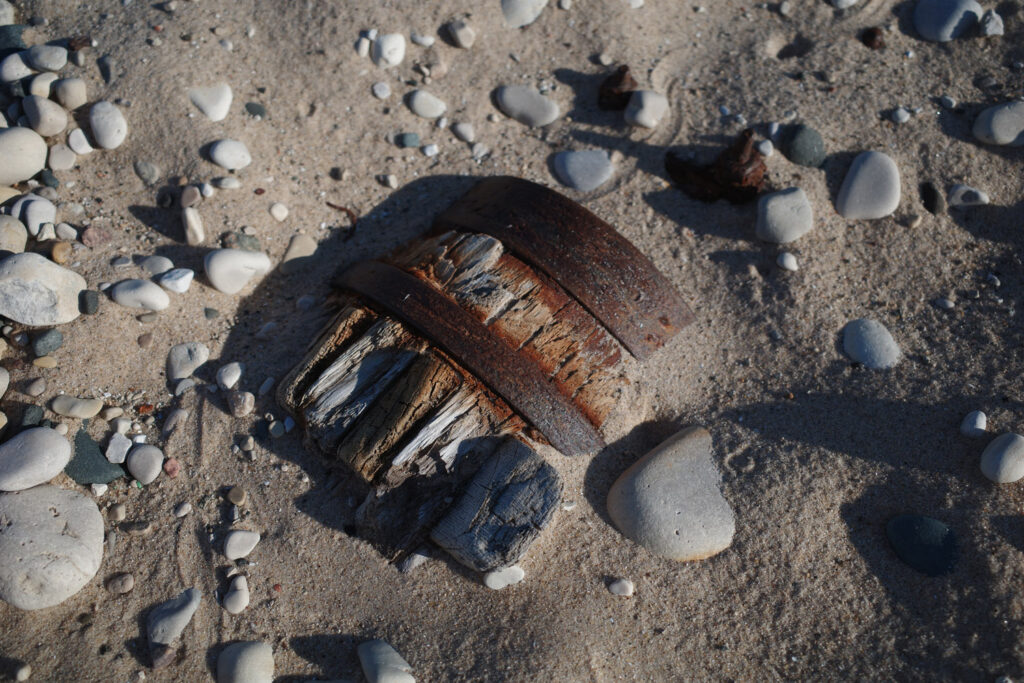
The House of David was founded in 1903 in Benton Harbor by a couple, Benjamin and Mary Purnell. Benjamin believed he was the seventh messenger of God along with his wife, his co-messenger. They believed the end was nigh and soon the Garden of Eden would be restored when Jesus returned. Followers kept their hair long, the men grew beards, they were vegetarians, teetotalers, and refrained from sexual activity. It must be said that the House of David were a relatively peaceful group who got along with the American Indians in the area without much struggle or strife.
The House of David was in the lumbering business. That’s what they did on High Island. That’s why there are abandoned train tracks on the beach and pylons in the water. On the skiff, I saw them lurking below. Back in the early 1900s, they built a big dock right on the Bay. They ran the train tracks to move the lumber from the interior of the island down to the water for further transport.
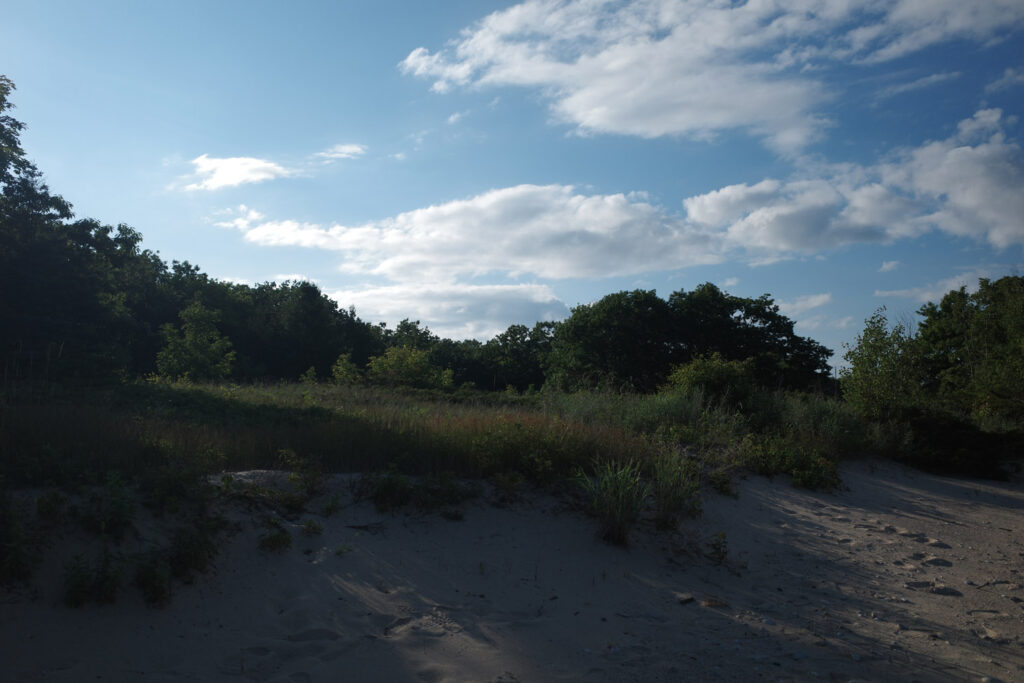
But the House of David closed up shop, and the lumbering stopped long ago. By the 1920s Purnell had been accused of violating the sexual mores of his own community. He was charged with a variety of offenses such as “having sexual relations with women and girls as a religious rite.” In 1927, before he was able to answer these accusations, Purnell died. Shortly after the House of David all but disbanded.
Slowly, over the years, all that the House of David built faded away. The roofs on the buildings fell in. The wood siding rotted away. The structures collapsed. The squirrels and the mice made the rubble their home. The weeds grew back where there were once floorboards. Wildflowers and trees grew again. High Island swallowed up the House of David.
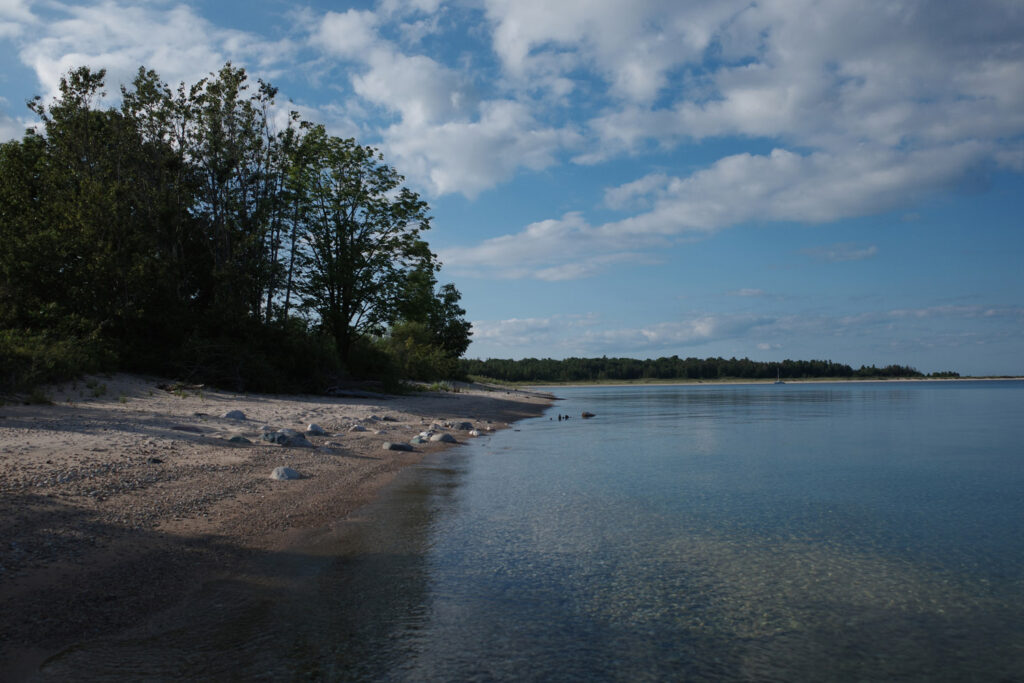
We come and we settle, we make our civilization and imagine it will last forever. And then, eventually, we die, or leave. And as soon as we do, nature starts up again. Eventually, all we built is swallowed up by the forest, the water, the snow, time. The train tracks running to nowhere, disappearing into the aquamarine water. Eerie, poetic, and true.
Walking along the shore, biting flies buzzing around my knees, the sun low in the evening sky, the cold sand on my feet, I picked up a few stones and put them in my pocket. I could hear the birds singing from the forest. The trails are all gone; there’s no easy way in now. Beyond the sandy shore, the island is enticing yet foreboding. It’s almost magical.
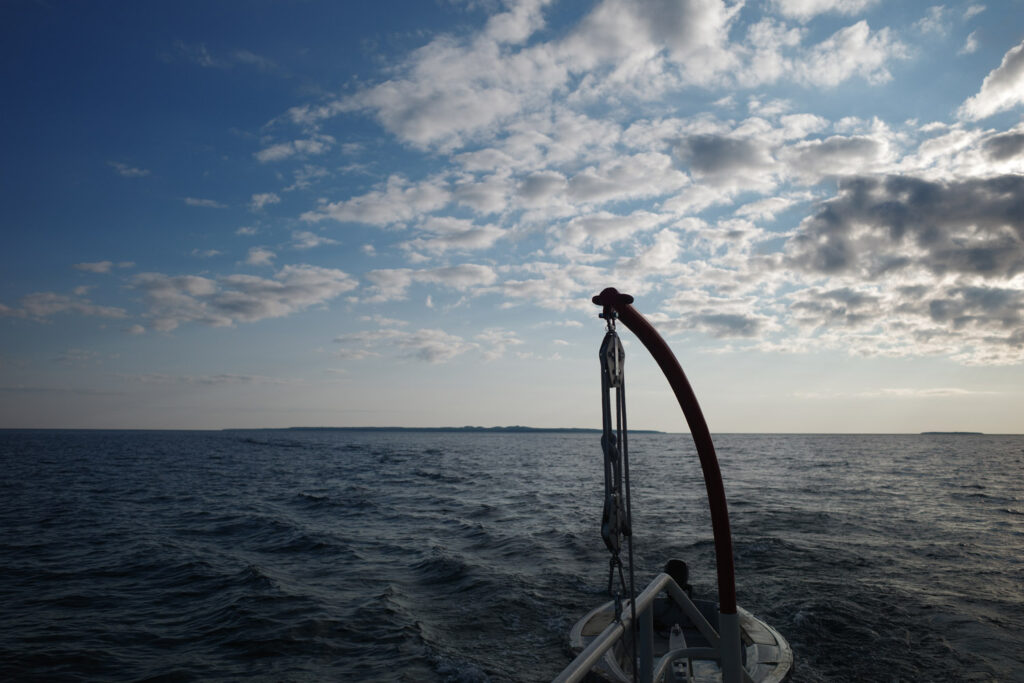
It’s just as it was before anyone ever came.
O.W. Root is a writer based in Northern Michigan, with a focus on nature, food, style, and culture. Follow him on X @NecktieSalvage.
